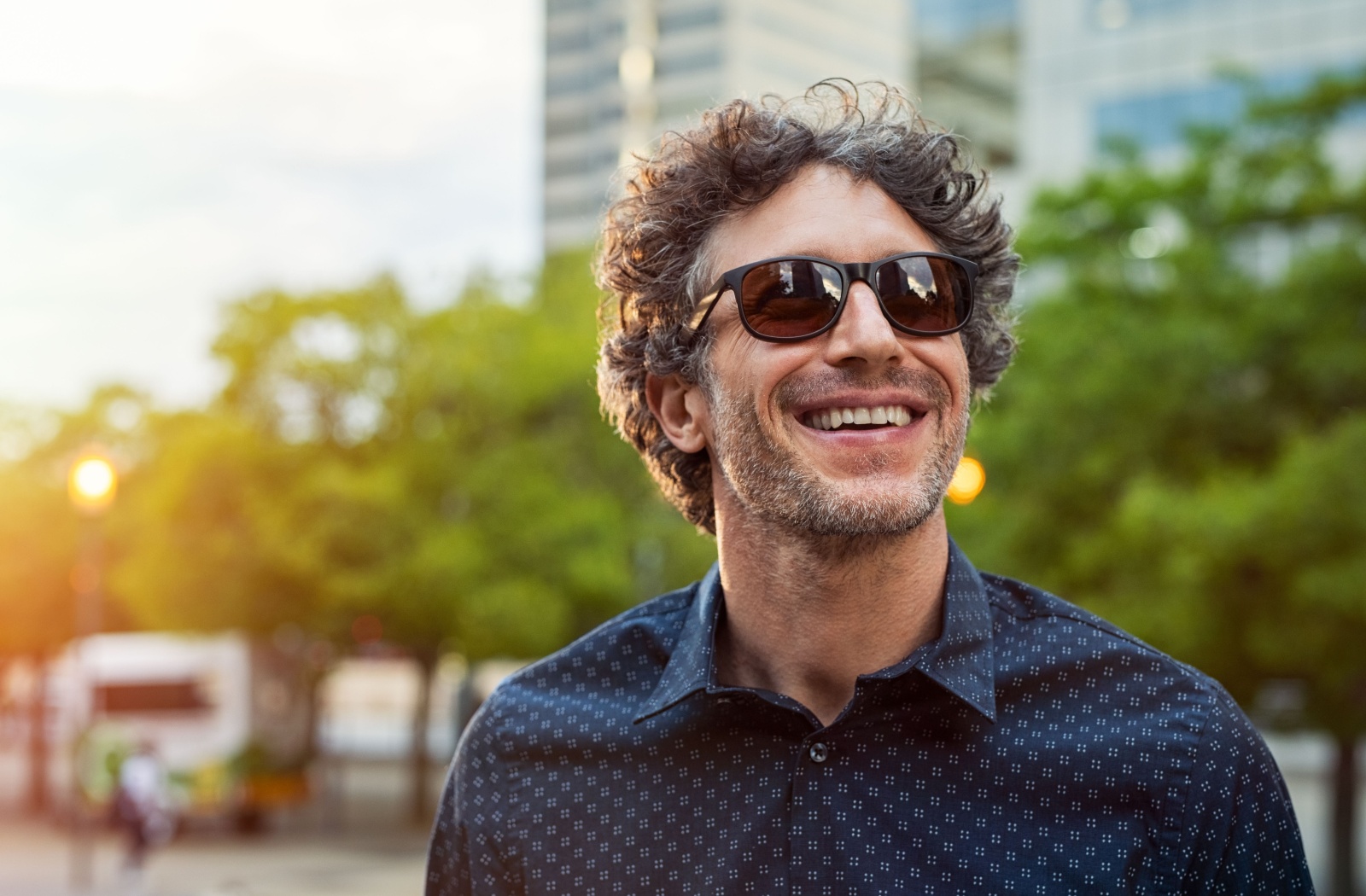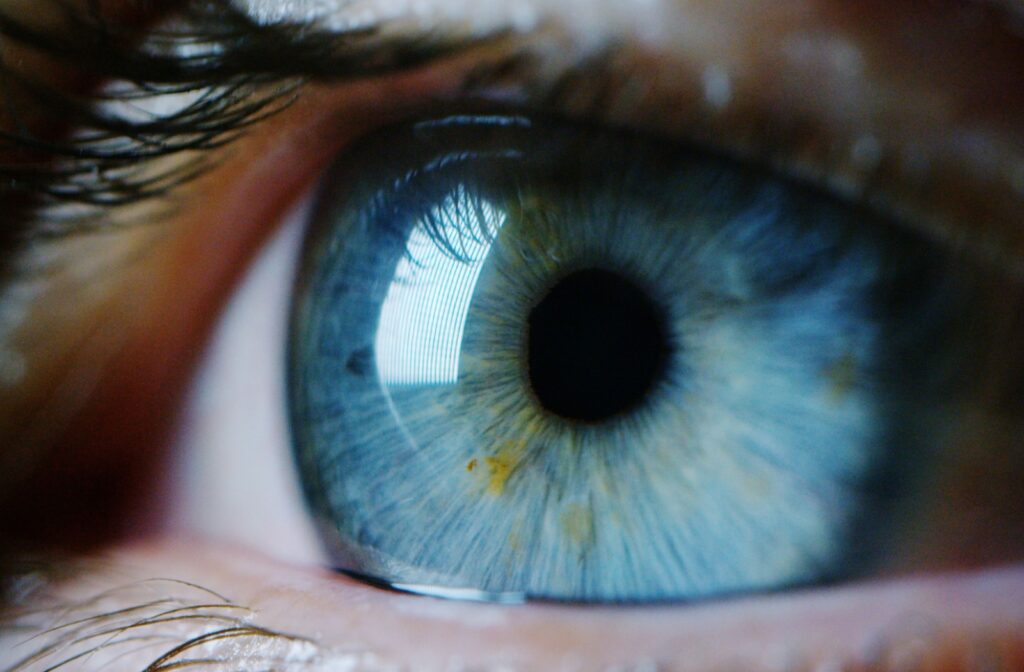There’s something relatable about that moment when the sun’s rays break through the clouds, making us squint and instinctively reach for our sunglasses. We’ve been there, shielding our eyes from the glare. However, it does seem like some people are more susceptible to the sun’s bright rays, and one of the causes of light sensitivity could be your eye colour.
Research suggests that individuals with blue eyes may be more sensitive to sunlight due to lower levels of melanin, which can result in less protection against bright light and glare. However, whatever colour your eyes may be, protecting your eyes from UV rays and getting regular eye exams is universally important!
Why Are Blue Eyes Sensitive to Sunlight?
Our eyes’ sensitivity to light reflects our eye health. Squinting is a natural reflex that reduces the amount of light that enters the eye, helping protect our eyes from intense light. However, extreme light sensitivity, or photophobia, can lead to discomfort and even pain when exposed to bright lighting conditions.
Melanin is a substance present in our bodies that produces pigment in our hair, skin, and eyes. The amount of melanin in the eyes determines how much light is absorbed and how much is reflected. Blue eyes contain less melanin than brown eyes, resulting in their lighter hue.
This lack of melanin may also contribute to increased sun sensitivity. Since melanin absorbs light, blue and other light-coloured eyes allow more light to pass through.
What Is UV Light?
Ultraviolet (UV) light, an invisible form of radiation from the sun, has significant effects on our health. While we can’t see UV light, we can certainly feel its impact. There are 3 types of UV light based on wavelength:
- UVA rays: These rays have the longest wavelength among the three types of UV light. They can penetrate deeply into the skin and are primarily associated with skin aging and long-term skin damage. UVA rays can easily pass through our ozone layer but are less intense than UVB rays.
- UVB rays: UVB rays have a medium wavelength and are responsible for sunburns and damage to the skin cells. They’re more intense than UVA rays but cannot penetrate our ozone as easily, with only about 5% reaching the Earth’s surface. UVB exposure is also crucial for the production of vitamin D in the skin.
- UVC rays: Fortunately, UVC rays are completely absorbed by our ozone and never reach the surface. UVC rays have the shortest wavelength and are harmful to all life. UVC is sometimes created artificially to kill bacteria.

Can Light Damage Your Eyes?
Most of the UV light that hits your skin is UVA, with some sneaky UVB rays getting through, too. While soaking up the sun is a lovely way to boost your vitamin D levels, overdoing it can harm your eyes. Excessive sun exposure can increase your risk for issues like cataracts, eye cancer, and macular degeneration down the road.
Sun damage is a concern for people of all ages. If you’ve ever gotten a sunburn, you already know how painful too much time in the sun can be. Your eyes can also develop a sunburn, a condition known as photokeratitis.
Symptoms of photokeratitis include:
- Discomfort
- Blurry vision
- A gritty sensation
- Redness
- Headaches
- Swollen eyelids
- Halos around lights
- Watery eyes
If you’ve been outside enjoying the sunshine and think you might have sunburned your eyes, don’t hesitate to see your optometrist. We can examine your eyes and suggest soothing treatments, like antibiotic eye drops or pain relief.
Protecting All Eyes from Sun Damage
Regardless of your eye colour, safeguarding your family’s eyes from UV damage is crucial. Invest in high-quality sunglasses that block 100% of UVA and UVB rays. Keep your sunglasses close, even on cloudy days as UV light can penetrate through cloud cover and surprise the unprepared.
Even in winter, when the air gets chilly, UV exposure remains strong as it reflects off snow and ice, intensifying the light that reaches your eyes. So, don’t leave your eyes vulnerable! Wear a wide-brimmed hat for extra shade and try to stay out of the sun during peak hours, typically 10 AM to 4 PM.
If you start to feel eye pain or notice signs of sun overexposure, take a break from the sun. Try placing a cool, damp cloth over your eyes to ease the discomfort. If irritation lingers for more than a few days or your vision becomes dim or blurry, it’s time to visit your optometrist.
Protect Your Precious Eyes with Stylish Shades
While blue eyes might be slightly more sensitive to sunlight due to lower melanin levels, the need for diligent eye protection is universal. You should protect your eyes from harmful UV rays, regardless of your eye colour.
At Mint Eyecare, we’re here to support you and your eye health. Whether you’re seeking personalized eye care advice or a stylish new pair of protective sunglasses, we’re ready to assist you.
Book an appointment today to explore how we can help safeguard your family’s vision while adding a touch of flair to your style.




